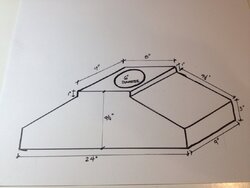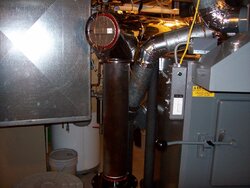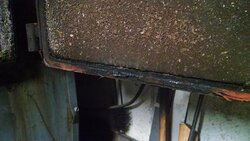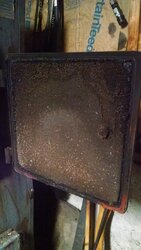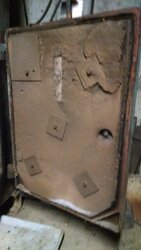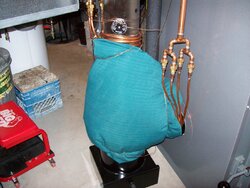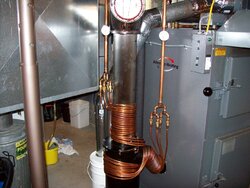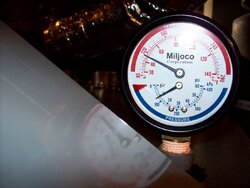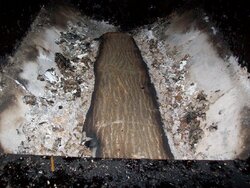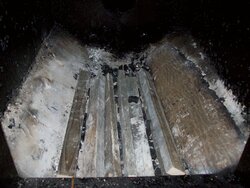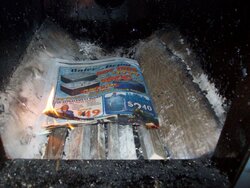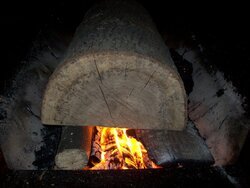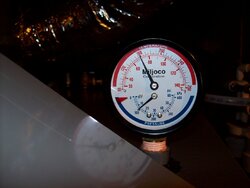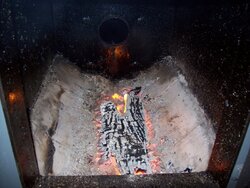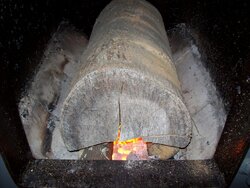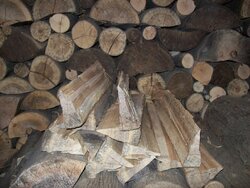infinitymike
Minister of Fire
Ponty
Hang in there bud, it will get better.
Now, first let me say that we shouldn't have to take the intricacies in stride, especially paying the money we did, BUT, taking anything in stride is my key to a somewhat serene life.
I try not to sweat the small and big stuff.
My first year was the most difficult and discouraging and I wanted to rip it out and get whatever the local scrap yard would give me.
BUT, I hung tough, too it slow and things began to work and run better.
True, that I didn't have the problems you had.
The problems I had were puffing and explosions.
Both of which I have solved.
I have the EPA plug in one of the lower tubes, I have the intake damper at 3/4 closed and I only load half a box of skinny splits and the other half with larger splits.
The explosions are solved by a delay timer relay set up that AHS sold me for $100.
It kills the power to the cycle timer (for what ever time you set it for, I set it for about 24 minutes) after the unit was running and then shut down.
This means the the gases can dissipate and the cycle timer can't turn the unit back on and ignite the gases.
I have NO issues with gaskets, fan seals, cracked refractory, op limit differential, etc.
There are times that I still get upset with smoke out of the stack that fills the yard, but again, I have resolved that (somewhat) by when and how much I reload.
Maybe I don't feel any of the other issues because mine is in my attached garage.
So any smell or smoke from huffing or opening the load door doesn't effect me.
My stack is 10' long coming straight off the top of the cyclone, so any ash just falls back into the pan.
I empty that every 1-2 or 3 days tops.
Maybe the Wood Gun should be sold as an outdoor boiler that needs to be in an outside structure and not in a house.
BUT there are MANY if not ALL WG owners who have them in there house and are taking it all in stride.
Hang in there bud, it will get better.
Now, first let me say that we shouldn't have to take the intricacies in stride, especially paying the money we did, BUT, taking anything in stride is my key to a somewhat serene life.
I try not to sweat the small and big stuff.
My first year was the most difficult and discouraging and I wanted to rip it out and get whatever the local scrap yard would give me.
BUT, I hung tough, too it slow and things began to work and run better.
True, that I didn't have the problems you had.
The problems I had were puffing and explosions.
Both of which I have solved.
I have the EPA plug in one of the lower tubes, I have the intake damper at 3/4 closed and I only load half a box of skinny splits and the other half with larger splits.
The explosions are solved by a delay timer relay set up that AHS sold me for $100.
It kills the power to the cycle timer (for what ever time you set it for, I set it for about 24 minutes) after the unit was running and then shut down.
This means the the gases can dissipate and the cycle timer can't turn the unit back on and ignite the gases.
I have NO issues with gaskets, fan seals, cracked refractory, op limit differential, etc.
There are times that I still get upset with smoke out of the stack that fills the yard, but again, I have resolved that (somewhat) by when and how much I reload.
Maybe I don't feel any of the other issues because mine is in my attached garage.
So any smell or smoke from huffing or opening the load door doesn't effect me.
My stack is 10' long coming straight off the top of the cyclone, so any ash just falls back into the pan.
I empty that every 1-2 or 3 days tops.
Maybe the Wood Gun should be sold as an outdoor boiler that needs to be in an outside structure and not in a house.
BUT there are MANY if not ALL WG owners who have them in there house and are taking it all in stride.


